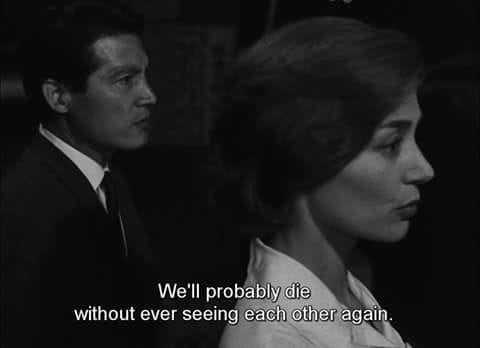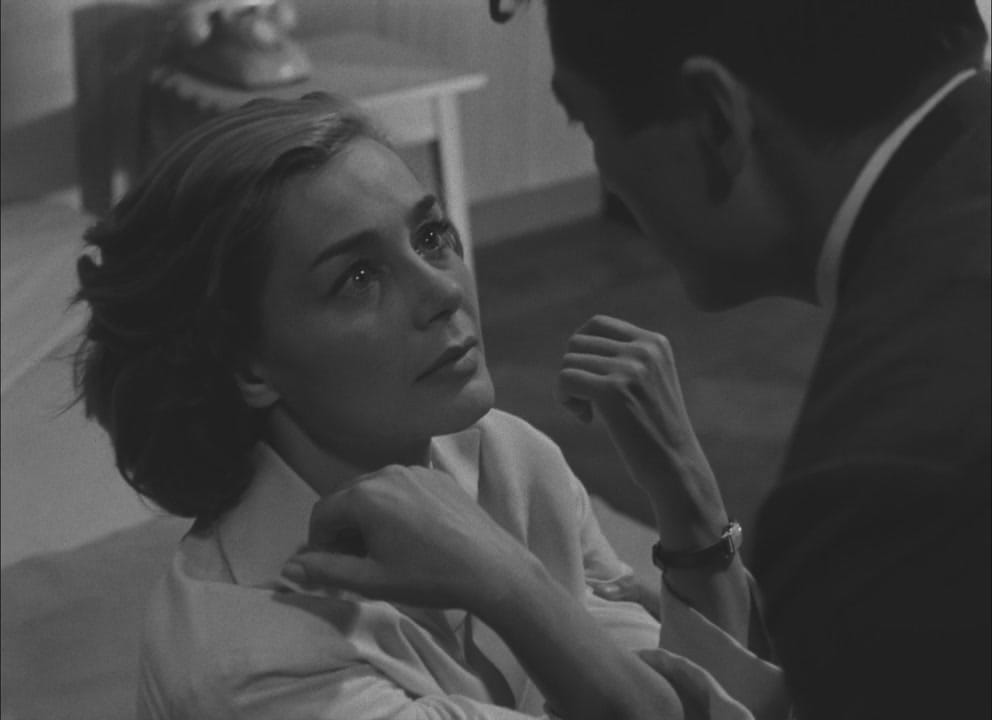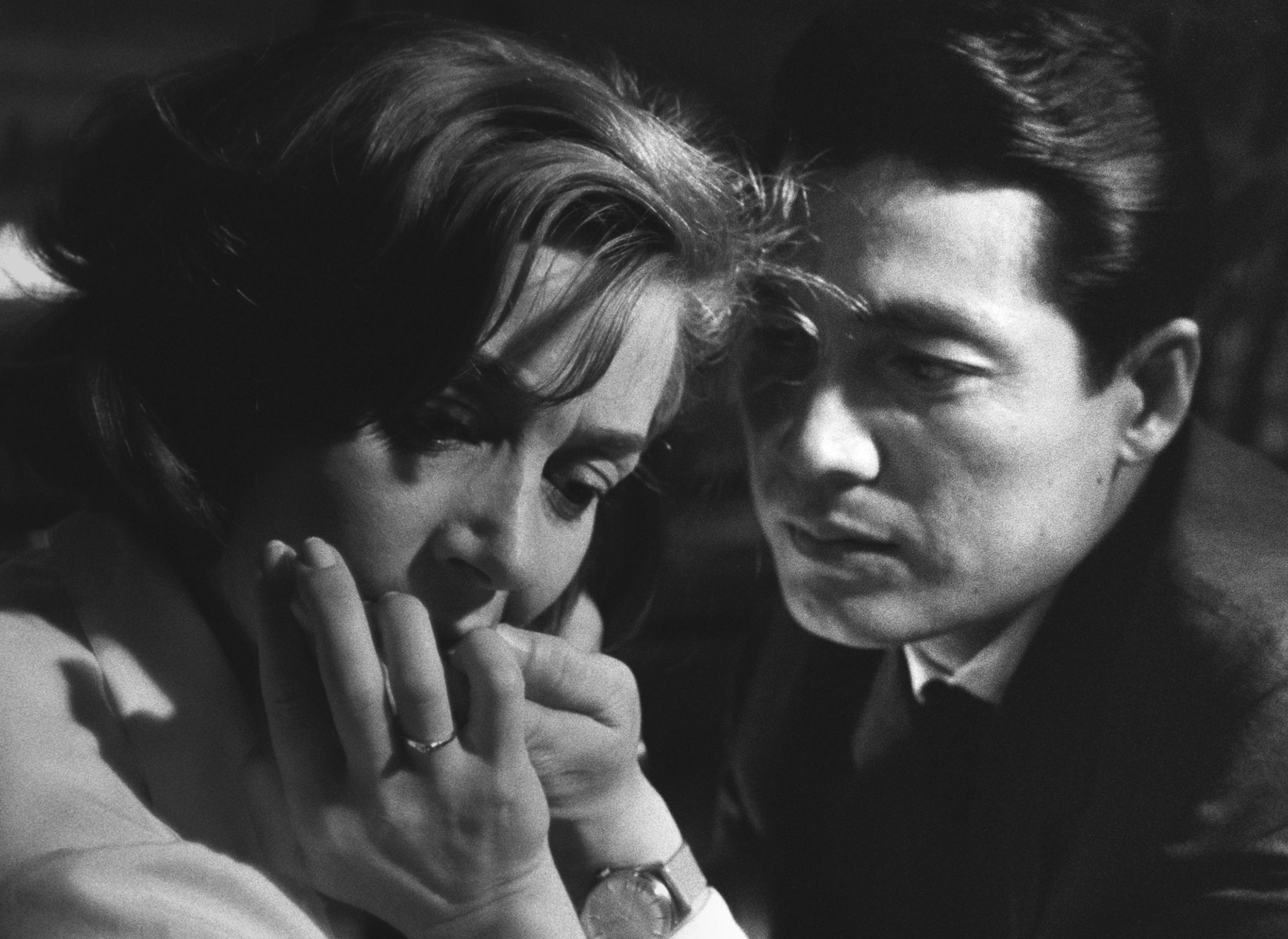By Socratis Santik Oglou,
The “confrontation” of the heroine’s suffering during World War II with the awful pain induced in 1945 by the atomic bombing of Hiroshima is depicted in a framework of low-voiced eroticism. The video abruptly cuts from the continuous love narrative to documentary clips, mainly from Hiroshima, or footage of the actress’s childhood in France. Most of the time, the two main characters are being caught in a tangle of memory and fantasy.
The director of the film is the French motion-picture director Alain Resnais, who was a leader of the New Wave —Nouvelle Vague— movement of unorthodox, influential film directors appearing in France in the late 1950s, like Cahiers du Cinema starters François Truffaut, and Jean-Luc Godard. His films are notable for their technical virtuosity and morphic experimentations, rather than being improvised. Full of reflection, his films are made after a thorough investigation, with lots of morphic experimentations.
Most of his screenplays are written by literature authors, while Alain focuses on the literary core, intricate construction, and poetic dialogue. Past, present, and future, all depicted in the same film, constitute a key motif in his films. The storylines are frequently elliptical, with abrupt downs in space and time. The script in Hiroshima Mon Amour is written by Marguerite Duras, while the production is by Αrgos/Comei/Pathé/Daiei. The music is by Giovanni Fusco and Georges Delerue, while the main roles are being played by Emmanuelle Riva as Elle and Eiji Okada as Lui.

Duras’s script is written in a duet format, with male and female voices intermingled on the visuals. When the two individuals meet for the first time, they rarely experience the repressed intensity and profound feelings that the two heroes have for each other. Following the film’s core juxtaposition, several concerns arise, such as whether it is preferable to even momentarily express actual desire —such significant coexistence of two individuals married with another partner— or to avoid temptation, concluding the film with the couple appearing to reconcile, arguing that the difficulties of truly understanding the historical truth are similar to the challenge of understanding another human being.
The film starts with a lengthy prologue. A man and a woman embrace each other as ash falls around them. A female voice claims to have witnessed the devastation of the Hiroshima bomb on August 6, 1945, while a male voice refutes her claims, claiming she did not see anything. As news footage of the attack is intercut with images of the victims, new war memorials, and structures in Hiroshima, they continue to dispute. The first section of the picture moves at such a fast pace that it confuses the audience, however, the second does not hesitate to radically slow down by adopting the rhythm of their pacing, frightened retreat, and patient expectation.
Elle looks out over the city from the balcony of her hotel in Hiroshima. She returns home to find her lover, Lui, naked and sound asleep on the bed. He awakens, and then both head to start their days. Lui goes to a World War II museum before visiting the set of an anti-war film, while Elle goes to work on the set of an anti-war film. As Elle prepares to return to France and end their brief relationship, the two discuss memory, and trauma throughout the film.

About the past of the main characters, which plays the main role in the film, Elle, fell in love with a young German soldier and planned to marry him, back in his hometown, Nevers, in France during World War II. But, eventually, her lover got shot and murdered by the Allies on the day of Nevers’s liberation. Elle was ridiculed in public due to her relationship with the German soldier, and imprisoned in the basement of her parents’ house, leaving her traumatized for life. After some time, her health improved enough that she was able to travel again, and she landed in Paris, the same day of the Hiroshima bombing. On the other hand, Lui, a Hiroshima native, was drafted into the Imperial Japanese Army during the war but was out of service when the bomb exploded, killing his entire family. After the war, he returned to Hiroshima, starting a new family while he starts working as an architect.
In the ending, the two proceed to compare their previous love lives with the Hiroshima bombing. Lui eventually tells Elle to be with him and stay, but Elle declines him telling him that back in France she has a family and because he is married. Elle says that she loves Lui the same way she did the German soldier, and that is doomed to fail, and after all, Elle returns to the hotel with Lui following her back. She strikes out at him, stating that she is forgetting who he is already. She begins calling him “Hiroshima” out of frustration, and Lui confirms that he is Hiroshima and that she is “Nevers”.
Hiroshima Mon Amour not only explores the beauty and passion of a new love, but also the undercurrent tragedy of being on different ends of a war, in which both sides are judged intrinsically horrible. In 1959, the film was played in Cannes and won the International Critics Award, while creating a sensation for the scenes of sexual intercourse and its narrative techniques.
References
- Tompson, K., & Bordwell, D., History of Film, 7th Edition, Pataki Publications, Athens
- Durgnat, E., R., Alain Resnais, britannica, Available here




